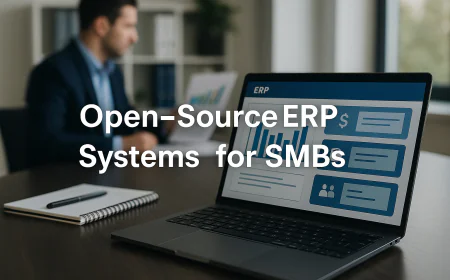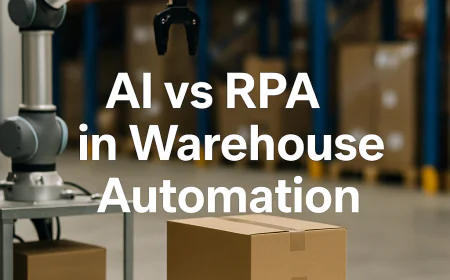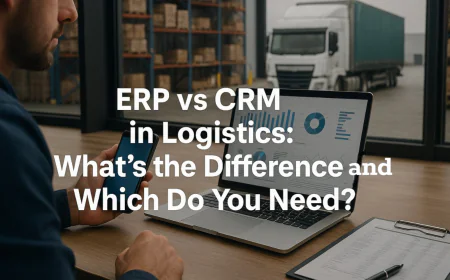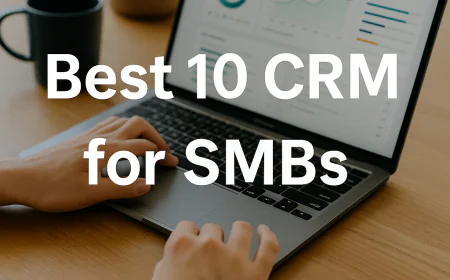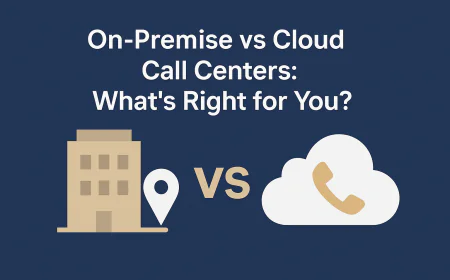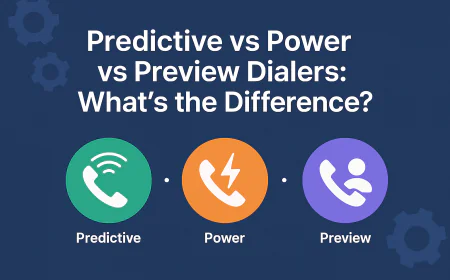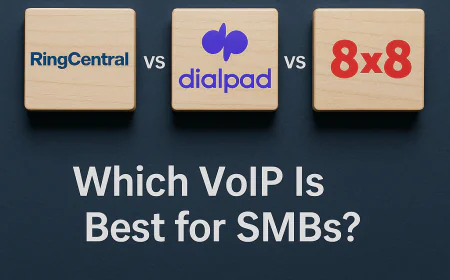Best CRM Software for Construction Companies & Contractors
Buildertrend vs JobNimbus vs Contractor Foreman vs Procore vs Houzz Pro — Which Construction CRM Helps Contractors Manage Projects, Leads & clients best?

-
Introduction

Why construction firms need more than spreadsheets
Spreadsheets might work for tracking a few jobs or contacts—but once your business scales beyond a couple of crews or projects, they become a liability. Contractors today juggle job scheduling, lead follow-ups, subcontractor coordination, materials procurement, and client communication—all in real time. Trying to manage that complexity with Excel or whiteboards creates delays, confusion, and costly errors.
Construction companies need CRM (Customer Relationship Management) software designed specifically for their workflows. That means tracking leads, converting them into jobs, and keeping all stakeholders updated through the entire project lifecycle—from estimate to closeout.
The cost of disorganized workflows and dropped leads
Missed calls. Forgotten bids. Outdated documents. Sound familiar? When a contractor’s workflow isn’t centralized, it leads to:
-
Dropped leads that could’ve turned into profitable jobs
-
Double-booked crews or last-minute schedule changes
-
Change orders lost in email threads
-
Frustrated clients due to lack of updates
-
Delayed payments because invoices or approvals aren’t tracked
Disorganization isn’t just inconvenient—it’s expensive. According to industry surveys, poor communication and project mismanagement can cost contractors 5–10% of project revenue. That’s thousands of dollars per job.
What this guide will help you decide
This guide compares the top construction CRM platforms side by side—Buildertrend, JobNimbus, Contractor Foreman, Procore, and Houzz Pro. Whether you're a general contractor, remodeler, or specialty trade business, we’ll break down:
-
Which tool best combines CRM with construction project management
-
Which platforms are easiest to use in the field
-
Which integrations matter most (like QuickBooks or estimating tools)
-
Where each CRM shines—and where it falls short
-
Who the real winner is for modern contractors looking to grow
Let’s start with what actually matters when choosing a CRM for construction.
-
-
What to Look for in a Construction CRM

Construction CRMs aren’t like traditional sales CRMs. You don’t just need a tool to track prospects—you need a platform that follows a job from lead to bid to build. The best construction CRMs merge customer relationship management with field-ready tools, estimates, scheduling, and project visibility.
Below are the core features to look for when choosing the right CRM for your construction business:
✅ Job and lead tracking in one place
The right CRM should capture every lead—whether it comes from your website, phone, or referral—and make it easy to track status, next steps, and follow-ups. Bonus points if it converts accepted estimates directly into active jobs, keeping sales and operations connected.
✅ Estimates, bids, and project proposals
Creating accurate estimates and sending out polished bids is critical. A great construction CRM lets you build templates, adjust pricing, and generate proposals quickly—often with e-signature support. Look for tools that store past estimates for easy reuse and tracking.
✅ Calendar and scheduling features for crews
Without real-time scheduling, crews get double-booked, subs show up at the wrong time, and delays snowball. A construction CRM should include drag-and-drop calendars, resource assignment, and alerts for changes—ideally synced across office and field.
✅ Client portals and real-time updates
Today’s homeowners and clients expect transparency. The best CRMs offer client portals where customers can view timelines, approve changes, upload documents, and send messages. This reduces back-and-forth and boosts client satisfaction.
✅ Document sharing (blueprints, contracts, permits)
From blueprints and contracts to inspection reports and punch lists, a construction CRM must make it easy to upload, organize, and share files. Bonus if it includes version tracking or integrates with document tools like Google Drive or Dropbox.
✅ Mobile-first access for on-site teams
A construction CRM must work as well on a jobsite as it does in the office. That means mobile apps built for field crews—allowing foremen to update job progress, upload photos, check schedules, and communicate with the office in real time.
✅ Integration with construction tools (QuickBooks, Buildertrend, etc.)
To avoid data duplication and manual entry, look for a CRM that integrates with tools you already use—such as:
-
QuickBooks or Xero (for accounting)
-
Gusto or ADP (for payroll)
-
PlanGrid, Buildertrend, Procore, or estimating tools like Clear Estimates
These integrations turn your CRM into a full-scale operations hub.
-
-
🏗️ Top Construction CRM Software Compared
-
1️⃣ Buildertrend

The Gold Standard for Residential Builders & Remodelers
Buildertrend isn’t just a CRM—it’s a full construction management suite built to handle everything from lead intake to client handover. Used by over one million construction professionals, it's especially popular among custom home builders, remodelers, and specialty contractors who want to keep projects, teams, and clients aligned in one platform.
What CRM features does Buildertrend include?
Buildertrend offers a complete CRM pipeline with lead capture forms, customizable stages, task reminders, proposal tools, and built-in e-signatures. It allows teams to track every potential job from first contact through signed contract—no spreadsheet or third-party CRM needed.
How does Buildertrend handle job scheduling and field updates?
Its drag-and-drop scheduling tool lets you assign tasks to team members, subs, or vendors with automatic notifications. Field teams can log daily updates, upload photos, and communicate job progress through the mobile app—even offline. Everything syncs instantly when signal returns.
Does Buildertrend support estimates, change orders, and financial tracking?
Yes—Buildertrend includes built-in estimating tools, professional proposals, change order tracking, and payment collection. Financials are tightly integrated with QuickBooks (Online and Desktop), allowing contractors to manage budgets, purchase orders, and client invoices from one place.
Is there a client portal or messaging system?
Buildertrend’s client portal is a standout feature. Homeowners can approve change orders, track project timelines, message your team, and make payments online. This reduces phone tag and builds trust through transparency.
What do real contractors say about Buildertrend?
🌟 What they love:
-
All-in-one platform with CRM, project management, and client communication
-
Excellent mobile app for crews and PMs
-
Professional proposals and fast change order approvals
⚠️ Room for improvement:
-
Some users report a steep learning curve and occasional feature bloat
-
Complex setups may require hands-on onboarding
Where can I learn more or try Buildertrend?
Visit: https://www.buildertrend.com
-
-
2️⃣ JobNimbus

Flexible CRM for Contractors & Roofing Teams
JobNimbus is a versatile CRM and project management platform tailored for contractors, especially roofing, siding, and exterior remodel teams. Known for its customization, visual pipelines, and mobile-friendly design, it helps businesses track every job from lead to payment while staying connected with crews and clients in real time.
What CRM features does JobNimbus include?
JobNimbus features customizable sales pipelines, lead capture forms, task automation, and contact management with tagging, filtering, and internal notes. Teams can set up workflows that match their unique sales process, helping ensure no lead slips through the cracks.
How does JobNimbus handle job scheduling and task coordination?
JobNimbus offers drag-and-drop calendar tools, color-coded job boards, and task assignments that sync across mobile and desktop. Notifications and reminders keep teams on schedule, and subs can be looped in without full platform access.
Can JobNimbus manage estimates, invoices, and payments?
Yes. JobNimbus includes digital estimating tools that pull from product catalogs or templates. Users can generate branded quotes, convert them into invoices, and accept payments online. It also integrates with QuickBooks for seamless financial syncing.
Is there a client communication or portal feature?
JobNimbus includes basic client communication tools, including email templates, status updates, and document sharing. While it doesn’t offer a full self-serve client portal like Buildertrend, its messaging features help keep clients informed during every phase.
What do real contractors say about JobNimbus?
🌟 What they love:
-
Highly customizable pipelines and workflows
-
Intuitive interface for both office and field teams
-
Strong performance for roofing and exterior trades
⚠️ Room for improvement:
-
Some users mention occasional sync delays with QuickBooks
-
Reporting features are improving but can feel limited for larger firms
Where can I learn more or try JobNimbus?
Visit: https://www.jobnimbus.com
-
-
3️⃣ Contractor Foreman

Budget-Friendly CRM with Construction-Specific Features
Contractor Foreman is a powerful all-in-one construction management solution built for small to mid-sized contractors who want affordability without sacrificing functionality. It combines CRM, estimating, project management, safety logs, and financial tools—making it ideal for firms that want control across the job lifecycle without enterprise pricing.
What CRM features does Contractor Foreman include?
Contractor Foreman includes a built-in CRM module that helps track leads, schedule follow-ups, assign tasks, and log notes or communications. Users can create custom lead forms, move prospects through sales stages, and convert leads directly into projects.
How does Contractor Foreman manage scheduling and team coordination?
The platform offers project calendars, crew schedules, and daily logs with time tracking and GPS check-ins. You can assign workers to tasks, view resource availability, and track project progress from the field or office. Its mobile app is especially useful for foremen managing multiple jobs.
Does it support estimating, bidding, and change order management?
Yes—Contractor Foreman includes estimating tools with item libraries, markup calculators, and bid templates. You can generate proposals, create change orders with client sign-off, and track financials against budgets. It also includes basic accounting tools and integrates with QuickBooks.
What client-facing tools are available?
Contractor Foreman includes document sharing, digital signatures, and email-based client updates. While it doesn't offer a full-fledged portal like Buildertrend, it still supports a professional client experience with customizable PDFs and real-time communication via email or mobile alerts.
What do real contractors say about Contractor Foreman?
🌟 What they love:
-
Extremely affordable with a wide range of features
-
Built specifically for contractors (no generic CRM feel)
-
Strong mobile app and good customer support
⚠️ Room for improvement:
-
Interface can feel a bit clunky or outdated
-
Reporting and dashboard visuals are functional but not flashy
Where can I learn more or try Contractor Foreman?
Visit: https://www.contractorforeman.com
-
-
4️⃣ Procore

Enterprise-Level Construction CRM with Deep Project Control
Procore is a robust construction management platform designed for large general contractors, commercial builders, and enterprise firms managing complex, multi-phase projects. While CRM isn’t its primary focus, Procore includes tools for managing project stakeholders, bids, documentation, and communication in highly structured environments.
Does Procore include CRM capabilities for lead and client tracking?
Procore doesn’t offer a traditional sales CRM. However, it includes preconstruction tools like bid management, contact tracking, and stakeholder communication features that cover many CRM-adjacent functions for large-scale operations. Integration with external CRMs (like Salesforce or HubSpot) is often used to bridge the gap.
How does Procore manage scheduling, crews, and collaboration?
Procore’s scheduling module allows for Gantt chart views, task dependencies, and multi-party coordination across contractors, subcontractors, and vendors. It’s designed to handle large teams and concurrent timelines with automatic updates, field logs, and notifications across mobile and desktop.
Can Procore handle estimates, bids, and change orders?
Yes. Procore’s preconstruction suite includes bid management, budget forecasting, and estimation tools. During project execution, it manages change orders, RFIs, and budget variance reporting with audit trails and financial tracking—making it ideal for firms with strict compliance and cost control requirements.
Are there client-facing tools or portals in Procore?
Procore supports owner and client collaboration via dedicated access roles. Clients can view documents, sign off on change orders, and track project milestones securely. While not positioned as a “client portal” per se, it enables structured client engagement, particularly for commercial or institutional clients.
What do real construction firms say about Procore?
🌟 What they love:
-
Built for large, multi-team project environments
-
Industry-leading document management and compliance tools
-
Extremely detailed control over budgets, RFIs, and submittals
⚠️ Room for improvement:
-
Steep learning curve and setup time
-
Expensive for smaller firms or single-project teams
-
Lacks a built-in CRM pipeline for sales or marketing
Where can I learn more or try Procore?
Visit: https://www.procore.com
-
-
5️⃣ Houzz Pro

Great for Residential Pros Needing Client Visibility & Automation
Houzz Pro is a cloud-based CRM and marketing platform designed specifically for residential remodelers, interior designers, and home builders. Built on the Houzz ecosystem, it blends lead management, client collaboration, and visual project tracking with built-in tools for proposals, invoicing, and online payments.
What CRM features are included in Houzz Pro?
Houzz Pro includes a lead inbox, customizable follow-up automation, contact profiles, and task reminders. Leads can be captured from Houzz listings or imported manually, then nurtured with email sequences, notes, and client-stage tracking.
Does Houzz Pro support scheduling and team coordination?
Scheduling features are available but more limited compared to Buildertrend or JobNimbus. It includes basic calendar tools, task assignment, and deadline tracking, best suited for small crews or solo contractors. For detailed scheduling across multiple subs, it may fall short.
Can it manage estimates, proposals, and payments?
Yes—Houzz Pro shines here. You can create branded estimates, proposals with embedded product selections, and track approvals with digital signatures. Invoices can be paid online via Stripe integration, and automatic payment reminders help streamline billing.
What client-facing tools does Houzz Pro offer?
This is one of Houzz Pro’s key strengths. Clients get a self-serve portal to view project updates, approve items, comment on selections, and review documents. The visual interface is polished and homeowner-friendly, improving transparency and communication.
What do real users say about Houzz Pro?
🌟 What they love:
-
Beautiful, client-friendly interface
-
Strong estimate/proposal tools with visual selections
-
Easy-to-use for residential pros with limited tech background
⚠️ Room for improvement:
-
Not built for large commercial contractors
-
Limited field scheduling and deep reporting options
-
CRM features are basic compared to standalone platforms
Where can I learn more or try Houzz Pro?
Visit: https://www.houzz.com/pro
-
-
🏆 Final Verdict
✓ YouConclude
What’s the Best Construction CRM?
After comparing Buildertrend, JobNimbus, Contractor Foreman, Procore, and Houzz Pro across lead tracking, client communication, scheduling, estimating, and on-site usability — one platform clearly rises above the rest for most small to mid-sized contractors.
🥇 Winner: Buildertrend – The Most Complete Construction CRM for Growth-Focused Contractors
Why Buildertrend Beats the Others?
1. Buildertrend vs JobNimbus
Both platforms offer strong CRM and project management features with mobile apps and lead tracking. However, Buildertrend goes beyond with deeper estimating tools, fully integrated client portals, and a more mature scheduling system ideal for managing multiple crews and complex timelines. JobNimbus is great for roofing and smaller teams but lacks Buildertrend’s comprehensive financial tracking and bid management.
2. Buildertrend vs Contractor Foreman
Contractor Foreman wins on price, offering a surprisingly full feature set for a low monthly fee. But it falls short on user experience and polish. Buildertrend’s interface is more refined, and its workflows support larger teams better. Contractor Foreman’s CRM features are more basic and lack advanced automation and integration options Buildertrend provides.
3. Buildertrend vs Procore
Procore dominates enterprise and commercial construction with unmatched document control, RFIs, and stakeholder communication. But it’s complex and expensive, with a steep learning curve and minimal traditional CRM lead tracking. Buildertrend offers a friendlier, all-in-one experience for SMBs and growing contractors who want CRM and project management tightly integrated without the enterprise complexity.
4. Buildertrend vs Houzz Pro
Houzz Pro excels in residential design and client visibility, especially for smaller firms focusing on proposals and client interaction. However, its CRM capabilities are basic, and it lacks comprehensive scheduling, budget management, and multi-user field tools that Buildertrend delivers. Buildertrend is better suited for contractors who need an end-to-end construction CRM with strong operational tools.
If you're a general contractor, home remodeler, or design-build firm managing multiple jobs and juggling sales, subs, and clients—Buildertrend is the one CRM that does it all in one place.
Unlike tools that either lean heavily toward project management (Procore) or lightweight CRM (Houzz Pro), Buildertrend strikes the rare balance: it supports pre-sale lead tracking and post-sale job execution with powerful tools for estimates, daily logs, schedules, file sharing, and real-time client collaboration.
-
Job and lead tracking? Fully integrated pipeline with custom stages.
-
Estimates and change orders? Branded, professional, and auto-synced to your budget.
-
Client portals? Yes — and they’re some of the best in the industry.
-
Field access? Native mobile app with scheduling, photo uploads, messaging, and punch lists.
-
Integrations? QuickBooks, Xero, Gusto, Salesforce, Google Calendar, and more.
The only major downside is pricing: Buildertrend isn’t cheap. But for contractors aiming to grow revenue, tighten project delivery, and centralize operations — it pays for itself in productivity gains and fewer dropped leads.
👉 Try Buildertrend or book a demo
🔎 Best Construction CRM by Contractor Type:
Still not sure? Here’s who each platform is best suited for based on your trade and team size:
🏗️ Buildertrend
Best for: General contractors, remodeling firms, custom home builders
Why: Combines sales CRM, job costing, field updates, client portals, and mobile tools in one hub.
🧰 JobNimbus
Best for: Roofing contractors, exterior remodeling teams, restoration businesses
Why: Customizable pipeline, mobile-first design, and strong automation for high-volume jobs.
💵 Contractor Foreman
Best for: Solo contractors or startups needing construction tools on a budget
Why: All-in-one toolset at a fraction of the price with CRM, estimating, daily logs, and time tracking.
🏢 Procore
Best for: Enterprise GCs, commercial construction firms
Why: Enterprise-grade documentation, RFI handling, bidding, and stakeholder collaboration.
🏡 Houzz Pro
Best for: Residential pros with a focus on design, proposals, and client experience
Why: Excellent visual proposals, client communication, and homeowner-facing interface.
✅ Final Takeaway
If your team needs one CRM to handle both client relationships and construction workflows — Buildertrend is the most complete solution available. It’s not the cheapest, but it’s the one most likely to scale with you.
-
-
🔄FAQs

Do contractors really need a CRM, or can they get by with spreadsheets and email?
While small contractors may manage initially with spreadsheets and email, growing construction firms quickly outgrow these methods. CRMs centralize customer data, track leads systematically, and automate follow-ups—critical for avoiding missed bids and ensuring timely client communication. As projects scale, a CRM’s integration with scheduling, estimating, and field operations becomes essential to prevent costly delays and communication breakdowns.
How well do Buildertrend and JobNimbus handle integration with accounting and estimating software?
Buildertrend offers seamless integration with popular accounting platforms like QuickBooks and Xero, syncing budgets and expenses in real time. It also provides built-in estimating and bid management tools tailored for construction workflows, reducing double entry and errors. JobNimbus supports integrations but often requires third-party connectors for advanced accounting sync, and its estimating module is less mature, making Buildertrend stronger for contractors needing a unified finance-CRM workflow.
For contractors managing multiple crews across job sites, which CRM offers the best scheduling and field collaboration features?
Buildertrend’s mobile app excels in supporting on-site teams with real-time scheduling, daily logs, photo sharing, punch lists, and instant messaging, all accessible offline—a must for variable connectivity in the field. JobNimbus provides crew scheduling and task management but lacks Buildertrend’s depth in daily reporting and client portal updates. Procore offers enterprise-grade field collaboration tools but with more complexity and cost, making Buildertrend the sweet spot for SMBs.
Can construction CRMs help improve client satisfaction and reduce disputes?
Absolutely. CRMs with client portals—like Buildertrend and Procore—allow homeowners and clients to view project progress, change orders, and schedules in real time, improving transparency. This proactive communication reduces misunderstandings, accelerates approvals, and minimizes disputes. Houzz Pro also focuses heavily on client engagement but with less project management depth.
What do real contractors say about Buildertrend’s strengths and weaknesses compared to JobNimbus or Contractor Foreman?
🌟 Contractors praise Buildertrend for its all-in-one platform that integrates sales, project management, and client communication seamlessly, reducing software juggling and improving team coordination.
⚠️ Common critiques include its higher cost and occasional learning curve for new users, especially those less tech-savvy.
JobNimbus users appreciate its flexibility and ease of customization for specific trades but note limited estimating features and smaller integration ecosystems.
Contractor Foreman is valued for affordability and basic features but falls short on advanced workflows and user interface polish.
Can a construction CRM fully replace both project management and sales tools?
It depends on the platform. Buildertrend comes closest, offering integrated lead management, estimating, proposals, scheduling, budget tracking, and client communication—all in one system. For many SMBs, this eliminates the need for separate CRMs and project management apps. JobNimbus covers most sales workflows and basic project tracking but may require supplemental tools for complex scheduling or cost control. If your business relies on tight coordination between sales and job execution, a fully unified platform like Buildertrend or Procore provides more operational control and fewer silos.
How do construction CRMs handle change orders and scope creep?
Top-tier CRMs like Buildertrend and Procore offer real-time change order management. Builders can submit change requests through the system, track client approvals digitally, and automatically update project costs and timelines—crucial for maintaining margins. These platforms also log who approved what and when, which helps avoid costly disputes. Simpler tools like JobNimbus or Houzz Pro often require workarounds or manual uploads for this process, which can lead to communication delays or revenue leakage.
What’s the ROI of investing in a construction CRM?
While CRM platforms like Buildertrend or Procore can cost several hundred dollars monthly, they typically pay for themselves through time savings, reduced rework, faster approvals, and higher client satisfaction. By streamlining communication, automating follow-ups, and organizing documentation, contractors avoid costly mistakes and capture more business. CRMs also help sales teams respond faster to leads, close more deals, and forecast revenue more accurately. For most firms, the ROI becomes clear within the first 3–6 months of use, especially if adoption is consistent across the team.
How do construction CRMs support subcontractor communication and coordination?
Buildertrend allows you to assign tasks, share schedules, and even give limited access to subcontractors—so they know where to be, what to bring, and when deadlines shift. Procore offers similar functionality but at enterprise scale, with tighter permission controls. JobNimbus can track subcontractors via task assignments but doesn’t offer a true subcontractor portal. If your firm relies heavily on subs, you’ll want a CRM that supports clear visibility, messaging, and documentation workflows to reduce no-shows and delays.
Is Buildertrend too complex for smaller contractors or remodeling teams?
Buildertrend does come with a learning curve, especially for small teams new to all-in-one software. However, its onboarding program, live chat, and training content help bridge the gap quickly. Many smaller contractors start by using just lead tracking, scheduling, and daily logs—then expand into budgeting, change orders, and client portals over time. For solo operators or very lean remodelers, something like JobNimbus or Houzz Pro may feel lighter and easier out of the box but won’t scale as cleanly.
How does user adoption impact CRM success in construction businesses?
The #1 reason CRM investments fail is poor adoption. Even the best platform becomes useless if field crews, estimators, and admins don’t use it consistently. Tools like Buildertrend and Procore invest heavily in training, mobile usability, and customer success to overcome resistance. They offer mobile apps that mimic on-site workflows, making it easier for foremen or PMs to log updates, upload photos, and close tasks in real time. Before buying, ask how onboarding is structured, who provides training, and what long-term support is offered.
-
🔄 Want to Conclude More? Try These

These handpicked articles help you explore more angles so you can conclude with confidence.
🔍 Running a Small Business and Need the Right CRM Fit?
Explore the most effective CRMs tailored for growing teams under 50 employees. Compare free and paid options, discover top-rated tools, and choose what works best for your workflow in:
👉 Best 10 CRM for SMBs under 50 Employees (Free & Paid)
🔄 Need Help Setting Up Your Call Center?
Looking for a comprehensive, step-by-step guide tailored for small businesses? Learn everything you need to get started in:
👉 How to Set Up a Call Center for a Small Business article
🔄 Curious About Virtual Call Centers or Looking for a Remote-First Alternative?
If you're building a call center but prefer a flexible, cloud-based setup, this guide breaks it all down:
👉 What Is a Virtual Call Center? Benefits & Setup Guide
What's Your Reaction?
 Like
0
Like
0
 Dislike
0
Dislike
0
 Love
0
Love
0
 Funny
0
Funny
0
 Angry
0
Angry
0
 Sad
0
Sad
0
 Wow
0
Wow
0







